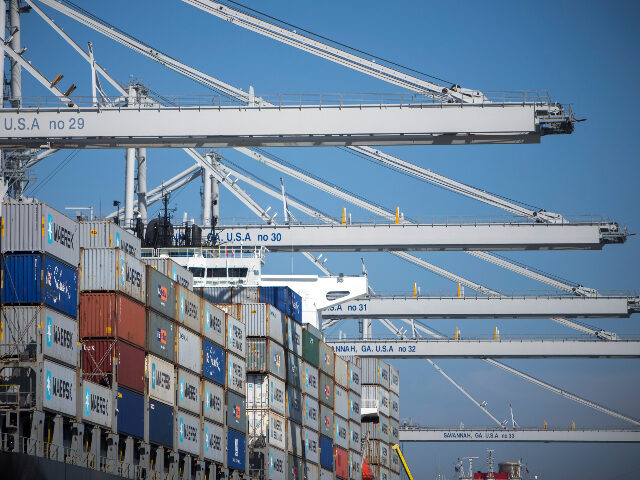In a trend that underscores the intransigence of high inflation in the U.S., the cost of imported goods rose in April for the fourth month in a row, marking the fastest pace of increasing import prices in two years.
The Department of Labor’s import-price index surged 0.9 percent last month, government data showed Thursday. This was three times higher than what was expected.
The broad-based increase was not limited to energy, as import prices excluding fuel also climbed by 0.7 percent.
Import prices for nonfuel industrial supplies and materials jumped 3.0 percent in April, marking the largest monthly increase since March 2022. April’s rise follows a 1.1 percent advance in March, driven primarily by higher prices for agricultural products.
In addition to industrial supplies, prices for major finished goods import categories also saw significant increases in April. Automotive vehicle prices advanced by 0.3 percent, following a 0.2 percent increase in March. Consumer goods prices, which had declined by 0.3 percent in March, rose by 0.1 percent in April. This increase was led by higher prices for coins, gems, jewelry, collectibles, and television and video receivers.
The price index for capital goods, which includes machinery and equipment used in production, also ticked up by 0.1 percent in April, reversing a 0.2 percent decrease from the previous month.
This uptick in import costs follows a period of steady declines throughout 2022 and 2023, a trend that helped reduce overall price inflation from the four-decade highs hit nearly two years ago.
But this reversed earlier this year. Import prices rose 1.1 percent over the past 12 months ending in April, breaking a 13-month streak of year-over-year declines. This could exacerbate the problem of resurgent inflation that has plagued the U.S. economy in the first four months of this year.
Inflation in the U.S. has become entrenched at a level significantly above the Federal Reserve’s 2 percent target. This persistence has led the central bank to delay any plans to reduce the key short-term interest rate, which is currently at a 23-year high.
At the start of the year, Fed officials expected to cut interest rates three times this year and financial markets reflected expectations for as many as five or six cuts. Rising inflation, however, has caused officials and markets to pare back expectations. Markets now expect the Fed will only cut one or two times this year.
On a positive note, the rising price of imports suggests that consumer and business demand remains robust in the U.S. and may signal more growth and continued labor market strength ahead.

COMMENTS
Please let us know if you're having issues with commenting.